Matt Pruss, Pruss Excavation, named Equipment World’s 2021 Contractor of the Year

Matt Pruss, Pruss Excavation, Dodge, Nebraska, has been named Equipment World’s 2021 Contractor of the Year.
In accepting the award, Pruss said: “This is a great group of contractors and I was super excited to meet them. I’m very honored to be part of this.”
The construction linage is deep in the Pruss family. Matt’s grandfather, Jim Sr., started Pruss Excavation in 1968. His father, also named Jim, joined him four years later, and Matt came on board in 2001. The company now has 40 employees and has $7 to $10 million in annual revenues performing levees, road work, wetlands, site work and lagoons.
The event also marks the first time in the program’s 21-year-history that the succeeding generation of a former finalist has been named both a finalist and a winner. Jim Pruss Jr. was a Contractor of the Year finalist in 2004.
The company now works within a 250-mile radius of its Dodge, Nebraska, headquarters. Local authorities called on the firm when two major floods hit Nebraska in 2011 and 2019. The company’s existing fleet of pull-behind scrapers plus a few more that it bought from as far away as Florida proved themselves on U.S. Army Corps of Engineers flood mitigation projects during the 2011 flood.
“That was our huge giant boost,” Matt says. “We went from $3 million a year to $8 million.”
That work ethic continued on the next major flood Nebraska went through, this time in 2019. “They continued to push through on our job even while they were doing levee work for the state,” says one client. “It was a big deal. Matt knows he can’t just be an owner and pick up a paycheck. He’s very involved and he drives the ship on their modeling.”
The Equipment World Contractor of the Year program has been sponsored by Caterpillar since its inception in 2000. It recognizes contractors who display the highest standards of business acumen, equipment management expertise, attention to safety and community involvement. Each year, 12 finalists receive an expense-paid trip to Las Vegas to participate in roundtables and an award ceremony.
Did you miss our previous article…
https://www.tortowheaton.com/?p=379
12 Road Projects Named Finalists for America’s Transportation Awards
After months of regional competitions, 12 road construction projects have been chosen as finalists for America’s Transportation Awards.
The awards, sponsored by the American Association of State Highway and Transportation Officials, include projects in Arizona, Delaware, Florida, Indiana, Kansas, Kentucky, New Jersey, North Carolina, Oregon, Pennsylvania, South Carolina and Utah. Along with AASHTO, the U.S. Chamber of Commerce and AAA sponsor the awards program.
“This competition recognizes just a few examples that highlight the ways in which state DOTs are improving quality of life and economic vitality of our communities, saving time and money through new innovations and technologies, and making better use of assets already in place,” says Jim Tymon, AASHTO executive director.
The grand prize and People’s Choice winners will be announced October 26. Each winner receives $10,000 cash to donate to the charity of its choice. The competition evaluates projects in three categories: Quality of Life/Community Development; Best Use of Technology & Innovation; and Operations Excellence.
Finalists are also categorized by project size: small (projects costing up to $25 million); medium (projects costing between $26 million to $200 million); and large (projects costing more than $200 million).
Here are the 12 finalists:
Kentucky Transportation Cabinet – Brent Spence Bridge Emergency Repair Project (Operations Excellence, Small project group) (Photo above.)
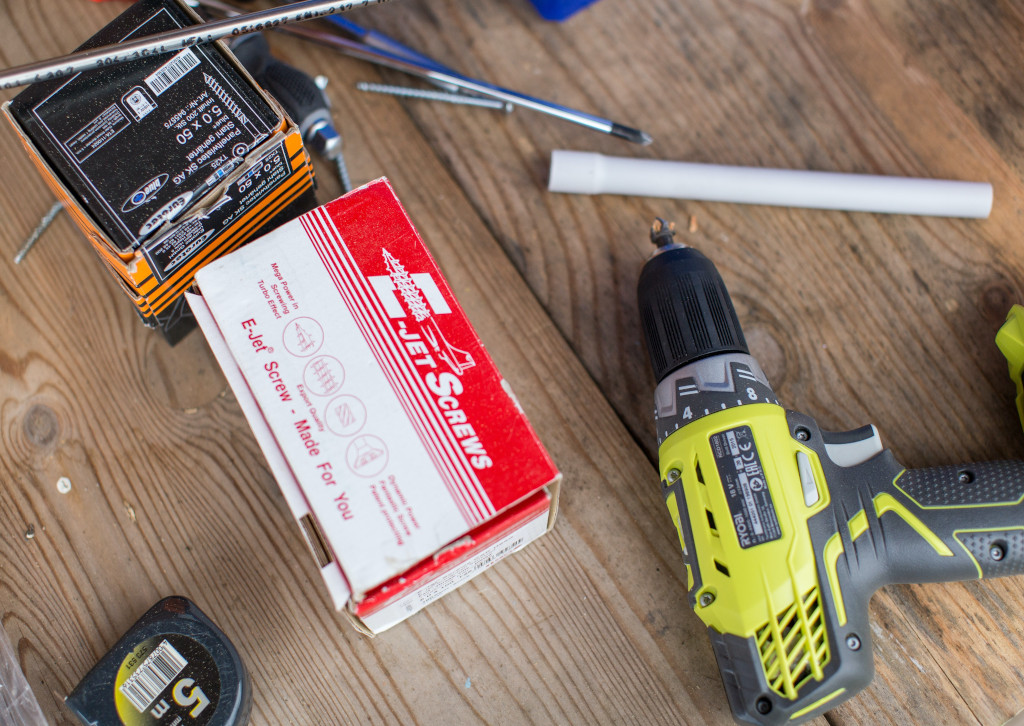
Safety for drivers, cyclists and pedestrians was improved with the $13.9 million widening of the Fourth Street Bridge over Interstate 40 in Flagstaff, Arizona.Arizona Department of TransportationArizona DOT – Fourth Street Bridge over Interstate 40 (Quality of Life/Community Development, Medium project group)

The Delaware Department of Transportation alleviated traffic congestion and created more transportation options for a Wilmington community by constructing the $82 million Senator Margaret Rose Henry Bridge.Delaware DOTDelaware DOT – Margaret Rose Henry Bridge and Approach Roads (Operations Excellence, Medium project group)
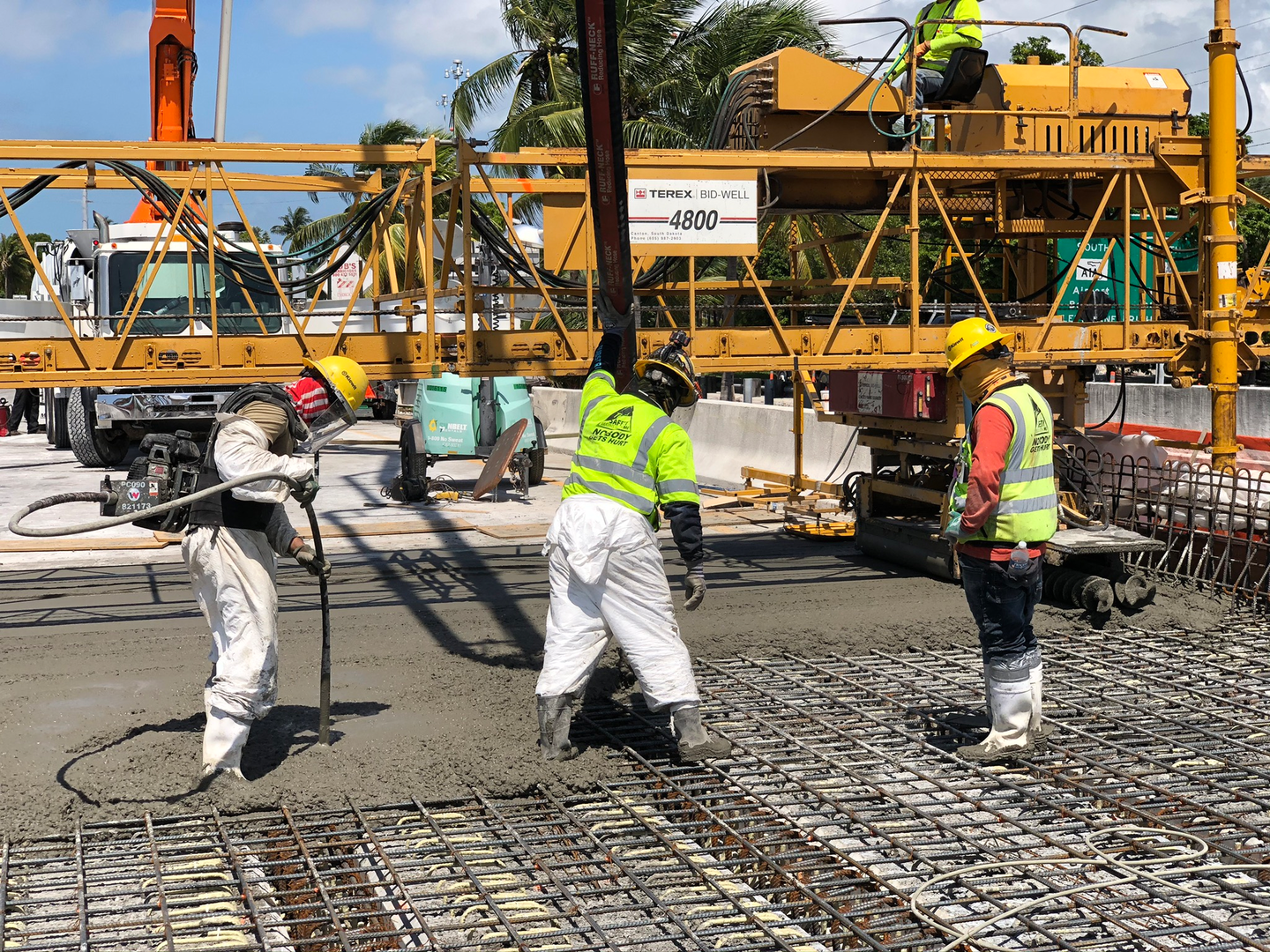
The Florida DOT deployed a SMART Work Zone System that included a temporary traffic signal, three closed circuit cameras and nine Bluetooth devices on its project to improve the Cow Key Bridge.Florida Department of TransportationFlorida DOT – Leveraging Innovation: How FDOT Transformed the Gateway to Florida Keys (Best Use of Technology & Innovation, Small project group)
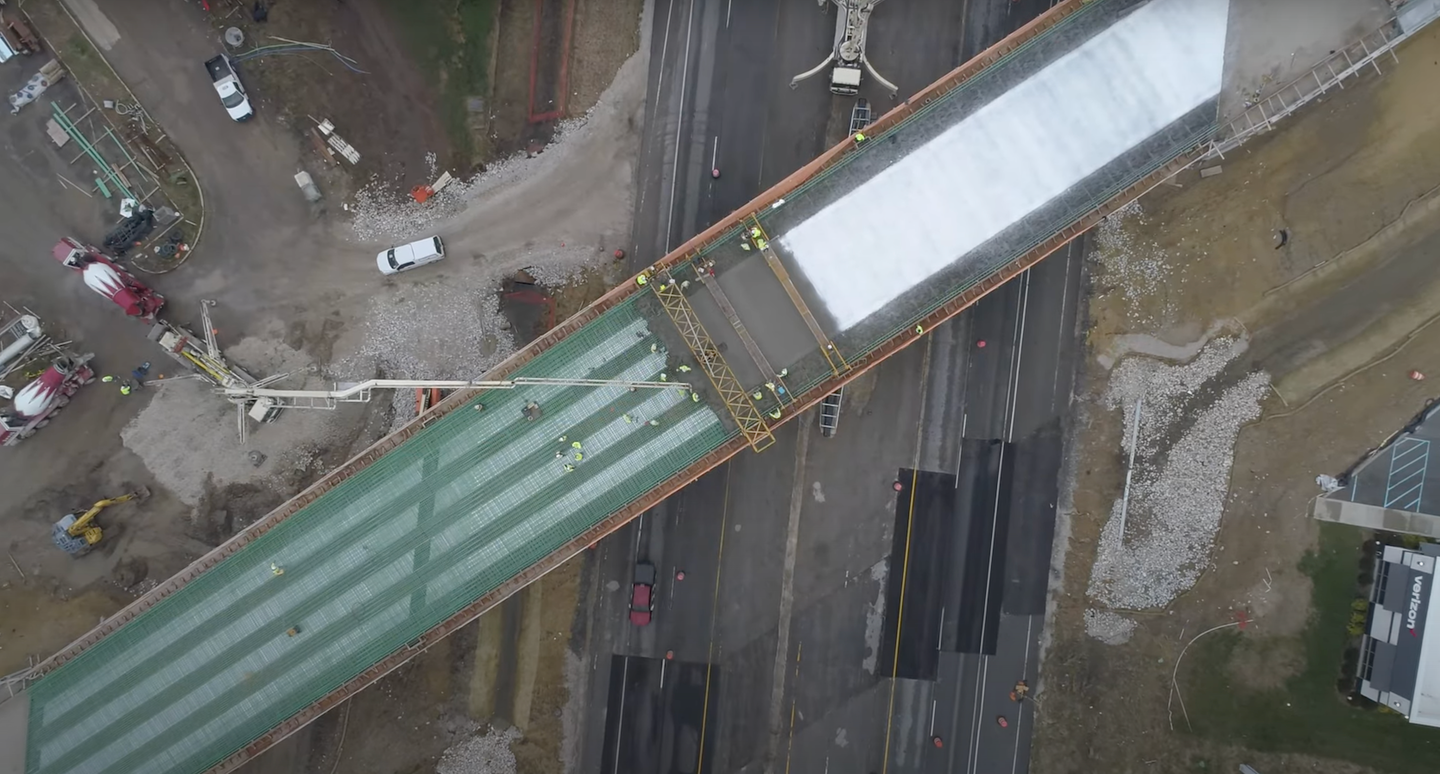
The Indiana Department of Transportation opened the Grand Valley Boulevard Bridge on June 15, 2020, in Martinsville. Replacing a section of four-lane State Road 37, the bridge gives drivers and pedestrians a safe connection to neighborhoods, schools and businesses.Indiana Department of TransportationIndiana DOT – Grand Valley Boulevard Bridge (Quality of Life/Community Development, Small project group)

Originally designed as a toll road in the 1960s but toll booths were never installed, the Turner Diagonal Interchange in Kansas City had three miles of obsolete and hazardous ramps. The Kansas Department of Transportation’s $30.3 million project increased safety and economic development.Kansas DOTKansas DOT – Turner Diagonal: Partnering for Growth (Operations Excellence, Medium project group)

The $25 million Route 1 Permanent Hard Shoulder Running Project overseen by the New Jersey Department of Transportation improved safety, increased emergency access, increased capacity and travel reliability, and cut commute times by up to 50 percent.New Jersey DOTNew Jersey DOT – Route 1 Permanent Hard Shoulder Running Project (Operations Excellence, Small project group)
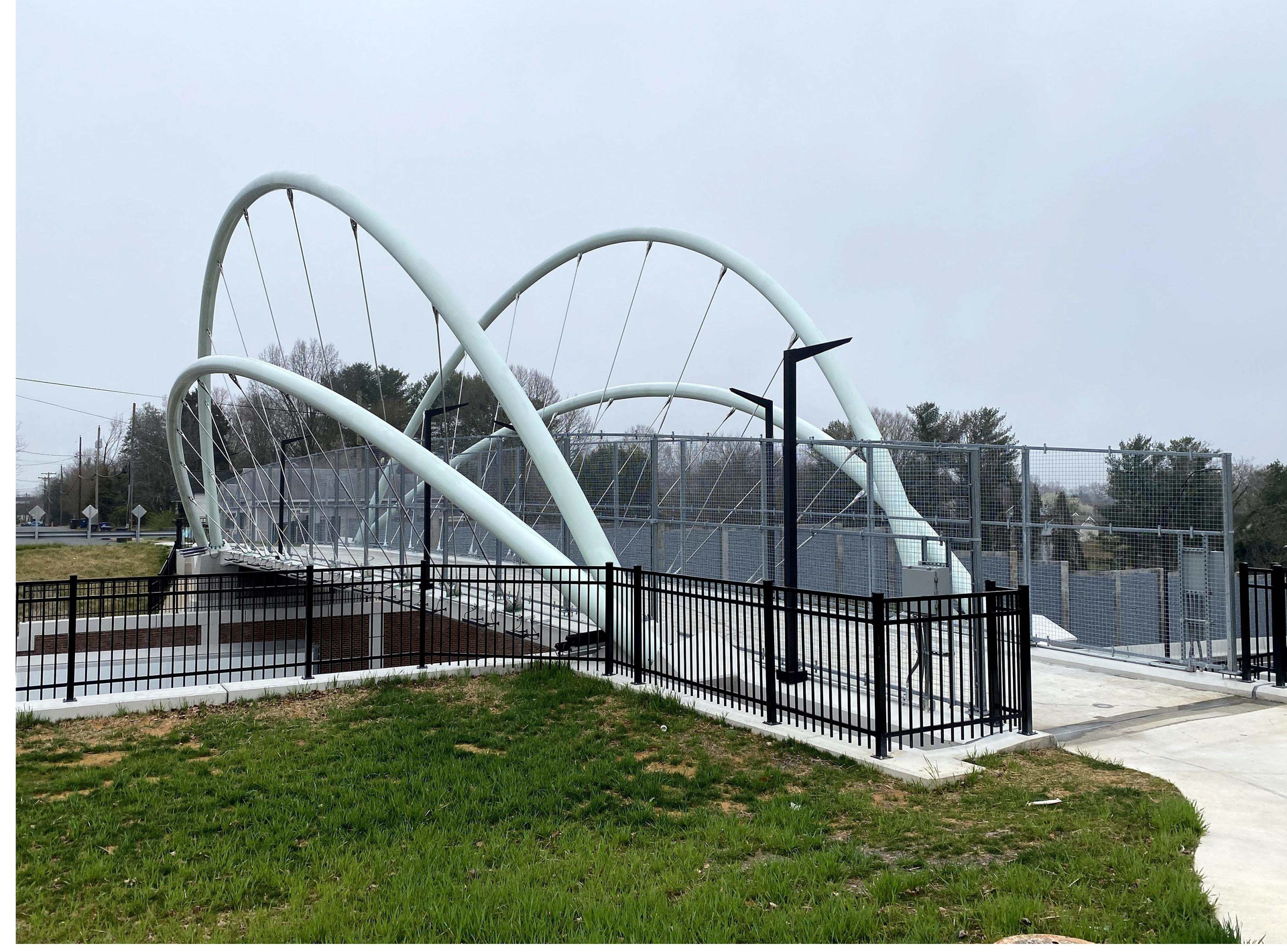
The $101.6 million Salem Parkway improvement project in Winston-Salem, North Carolina. The project included 10 bridge replacements, two new pedestrian bridges, a walking and biking path and extended sidewalks.NCDOTNorth Carolina DOT – Reconstruction of Salem Parkway (U.S. 421/I-40 Business) (Quality of Life/Community Development, Medium project group)

Oregon Department of Transportation developed a $15.6 million automated system that posts real-time weather, traffic flow and surface condition readings on digital billboards on Interstate 84 in northeastern Oregon.Oregon DOTOregon DOT – I-84 Snow Zone Safety Improvement Project (Operations Excellence, Small project group)

To improve accessibility and safety for motorists, bicyclists, boaters and pedestrians along SR 381, the Pennsylvania Department of Transportation launched a $12.8 million multimodal gateway project at Ohiopyle State Park.PennDOTPennsylvania DOT – Ohiopyle Multimodal Gateway (Quality of Life/Community Development, Small project group)

This stretch of scenic S.C. 61 in the Charleston area underwent a $4.4 million improvement project to add new lanes and widen shoulders while reducing the number of trees cut.SCDOTSouth Carolina DOT – C. 61 Phase 1 (Rural Road Safety Program) (Operations Excellence, Small project group)

The Utah Department of Transportation completed a $415 million project that widened I-15 to six lanes in each direction, reconfigured two interchanges, replaced 15 bridges, built a new bridge, and created a new flyover ramp to address traffic congestion in rapidly growing Lehi.Utah Department of TransportationUtah DOT – I-15; Lehi Main to S.R. 92, Technology Corridor (Quality of Life/Community Development, Large project group)
An independent panel of transportation experts will choose the Grand Prize winner, while the public will select the People’s Choice Award winner through online voting weighted to each state’s population, AASHTO says.
The online voting ends at 11:59 p.m. October 25. Votes can be cast at AmericasTransportationAwards.org.
AASHTO will announce the winners during its Annual Meeting October 26-29 in San Diego.
Did you miss our previous article…
https://www.tortowheaton.com/?p=366
How to Solve Your Construction Labor Shortage

Still looking for the proverbial easy button to fill your talent pipeline? We hate to break it to you: there isn’t one.
“If you’re in this industry and not being the biggest promoter of it, you’re part of the problem,” says Benjamin Holmgren, president of Buildwitt Jobs. “You’re not going to solve it for the industry. Solve it for you.”
Holmgren was joined by Natasha Sherwood, executive director of the Independent Electrical Contractors Florida West Coast Chapter, and Steve Cona III, president and CEO of the Associated Builders and Contractors Florida Gulf Coast Chapter, in a recent panel discussion led by Autumn Sullivan, director of marketing and experience for Mobilization Funding.
The panel explored the issue of why skilled trade workers are leaving the industry, the impact of culture on recruitment and retention, and what companies can do to increase their talent pipeline.
Recruiting and retaining the next generation
So, can everyone stop blaming millennials already? Continuing to drone on about how millennials lack worth ethic is so 2010. Older millennials, those born in the 1980s, are established and in positions of power in their careers. Where the industry needs to focus its attention is Gen Z and Gen Alpha.
“I don’t believe it’s so much a labor shortage, as a shortage of leaders who know how to lead the next generation,” said Holmgren. “Kids my age want to have a mission to get behind. They want to have a vision. They want to be led, trained and developed.”
The companies that have solved this understand this workforce development crisis is not about millennials. “Taking ownership of solving this for your company is the elixir,” said Holmgren.
Shop class makes its comeback
Getting in front of Gen Z and Gen Alpha starts in school. Trade education in middle school and high school was nearly extinct but is slowly making a comeback. Until there is wider support for the curriculum at a state and district level, getting involved at an individual level is critical.
Construction companies can help through apprenticeships and mentor programs. Contractors involved in mentorship see better hiring success because they already have name recognition with students, panelists said.
“The greatest benefit to our industry would be a solid pipeline out of high school and into the trades,” said Cona. “It has to be a statewide effort in our educational system to promote opportunities in all occupations that don’t necessarily require a four-year degree. The average age of our apprentice is 26-27 years old, and we have to get that lower to 21-22 years old. It can’t be an afterthought.”
Outside of local efforts, Holmgren suggests meeting the younger generation where they are online.
“It’s one thing to put on a trade show or job fair, but what about Instagram? TikTok? One thing you can start doing today is using social media to tell the story of your business and show people what it’s really like to work in your industry. It’s not that you have to make it look cool; the trades are already cool. Come join us – that’s what we need to be telling people.”
Work culture in construction
Taking ownership of the construction recruitment and retention problem also means taking a hard look at company culture. For better or worse, every company has a culture. How that culture has evolved depends on how it is emulated and nurtured daily.
Work culture has been cited as a major factor in many skilled-trade veterans leaving their employer or the industry entirely. While culture is a hot topic in the construction industry, and often framed as something only young people are pushing for, it has a significant impact on retention across the board.
“You can tell that no matter the age of the employee, they are all looking for a culture that has a family atmosphere, opportunities for advancement, flexible hours and good benefits,” said Sherwood. “I just helped a fourth-year apprentice graduate who had an opportunity to go anywhere. He took a job at a company that paid $2 less an hour because it was a good fit. There’s that level of appreciation that is sometimes more important than the dollar bottom line.”
lternative talent pipelines
Beyond young people, there are many other viable talent pools and untapped markets to help fill the skilled-worker pipeline. Correctional institutions, foster care systems and the military are just a few options.
“We’re looking for all sorts of avenues to fill that pipeline, and one of those is folks coming out of corrections,” said Cona. “We’re getting asked by state leaders and politicians to work with them to help develop skills while people are still incarcerated. So whenever they get out, they can get plugged back into society. If you can give people opportunities and jobs when they get out of being incarcerated, their chances of going back are very slim.”
“The military does a great job recruiting kids, with ROTC officers and billboard campaigns,” said Sullivan. “The trades need to be seen as a viable option. You can feed your family, you can travel around the country – there’s a lot of opportunity depending on where you want to go with it.”
Continuing education for retention
While there are required continuing education credits in the construction industry, employers should also consider training that provides employees with a path toward a goal they value, such as moving from apprentice to superintendent.
“In this day and age in this economy, you have to invest in training your workforce. There are no unemployed electricians and plumbers sitting on the sideline,” said Cona. “You have to build your pipeline by investing in people who might not necessarily have the skills that you need at that time. Invest in your employees, train them, put them in apprenticeship programs and maintain it through their lifecycle as an employee.”
An engaged employee is someone who stays with you.
Changing the narrative
While the narrative that construction is a dead-end job is a systemic problem, individual companies can start making strides today to reframe the conversation and illuminate the opportunities.
“This country was built because people learned skills, created things and built things. No one can say this country was built because people went to college. That’s what we need to continue to push,” said Cona. “As parents, as an industry, we need to be better at pushing the narrative that this is a viable option.”
“Don’t people get tired of talking about finding good help?” adds Holmgren. “We know you can’t find good help. Do something.”
“I’m not interested in solving the industry’s labor-shortage challenge, but if there is one person who can take something from this and it lights a spark and they can solve it for them, that’s a win.”
Watch the full webinar here.
Did you miss our previous article…
https://www.tortowheaton.com/?p=363
Skycatch Releases Flight1x Cloud-Based Drone Solution

Using photogrammetry, drones can collect enormous amounts of information on earthmoving, industrial and mining sites. But when it comes to downloading all that data … put on a fresh pot of coffee, there’s lots of time involved.
That’s why many in the industry may be interested to hear that Skycatch, a data automation and analytics provider for drone mapping, has announced the release of Flight1x, a cloud-based solution for the DJI M300 drone platform.
Built on technology adopted by large mining companies and suppliers such as Komatsu and AngloAmerican, Flight1x is proprietary software developed specifically for the M300 that, according to the company, offers the most complete end-to-end high precision industrial drone capabilities available today.
Compared to off-the-shelf photogrammetry tools and laser sensors, Skycatch’s drone software reduces the time required to obtain high-accuracy 3D data by 60% and delivers results in 10 to 15 minutes compared to the more typical three hours. Flight1x takes these capabilities to the next level on the M300, delivering sub-3-centimeter accuracy for tailings management and inspection.
This reduces surveying costs, improves production planning and minimizes the risk of human error in hazardous mining sites. Skycatch’s analytics platform, Datahub, delivers added value for specific industrial workflows such as pit survey, highwall mining and repeatable tailings inspections.
Skycatch specializes in bridging data from the physical world to the digital. The new Flight1x solution delivers data and network security via Skycatch servers in the United States coupled with advanced automation features like a 3D first-mission planner, mining-focused workflows and deep integration into Datahub.
Additional functions and features when using the Flight1x software and M300 include:
Automated capture, extraction and processing of high-precision 3D point clouds.>Specialized mission planning automation to extract data from complex terrains such as high walls.>Complete industrial data capture and processing for repeatable and automated spot inspection.>Consistent data retrieval analysis of thousands of terrain spots in a single location by an automated industrial drone. >Automated aerial robot technology built on Skycatch’s platform that eliminates need for manual pilots and reduces risk of human error.
Did you miss our previous article…
https://www.tortowheaton.com/?p=360
Task Force Racing to Develop Tech Guidance for Electric Trucks
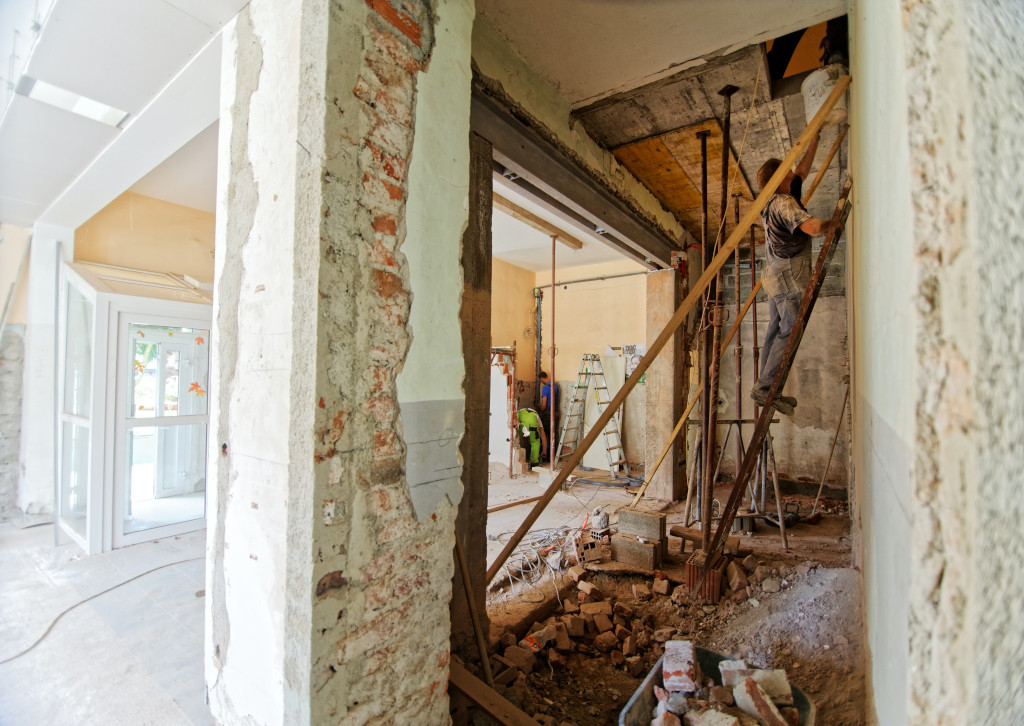
Editor’s note: Trucking industry efforts to develop recommended practices for training techs on electric trucks may offer a glimpse of what the construction industry will go through as more electric machines reach the marketplace. Here’s what’s happening on the trucking side.
Electric vehicle (EV) research and development has become a major business unit for North American truck OEMs (and new industry players), but those efforts still represent a focus on the future rather than a necessity for today.
An American Trucking Associations’ Technology & Maintenance Council (TMC) study group intends to develop a recommended practice (RP) for Electric Vehicle Technician Training. Most of the discussion has focused on how fundamentally different EV operation is from conventional diesel engines, and how all service shops (fleets, dealers, independent service providers, etc.) will need to invest heavily in training to ensure their employees can correctly and safely perform EV service.
Kevin Otto, formerly with Cummins, led the discussion during a recent TMC meeting.
In opening the task force meeting, Otto said he estimates nearly every diesel technician working in trucking today will require substantial education on electrical systems to even approach working on EVs, let alone become an expert. Because today’s Class 8 trucks run almost entirely on 12-volt DC power — alternators use AC power within a closed system — most technicians have no experience working on or around higher voltage equipment.
Otto said obviously that will need to change. The electrical power running through a conventional Class 8 truck is dangerous enough. But in a vehicle fully run by batteries? Otto said untrained technicians attempting to service an EV tractor could put themselves in serious danger.
“These battery packs will pack a big wallop,” he said. ‘[Electric trucks] will be foreign for folks who haven’t worked on these systems before.”
That’s where TMC wants to help. Otto said TMC hopes to encourage participation from heavy-duty OEMs to leverage the EV training programs they are already developing for their dealer partners to put together top-level guidance that can be applied across the industry. Once developed, Otto said TMC’s RP won’t attempt to provide granular details on how to complete every EV repair, but it will hopefully offer clear and detailed descriptions of what training a technician needs before being allowed to start an EV service event.
The study group also intends for the RP to address battery testing, charging, shipping and handling, tool requirements and more. Meeting attendees spoke to the importance of each step, noting how dangerous battery packs for heavy trucks could be for an untrained professional.
With electric trucks now available to order but still mostly in development, it’s likely the study group has some time before its RP must be completed. Nevertheless, Otto said the group intends to work quickly once task force leadership is established so the RP beats the Class 8 EVs to the mainstream.
Did you miss our previous article…
https://www.tortowheaton.com/?p=357
Ritchie Acquires SmartEquip, Makes Parts Play

Ritchie Bros. Auctioneers is acquiring SmartEquip for $175 million, a deal that will give Ritchie “asset-specific full-lifecycle parts and service support” to dealers, OEM partners and buyers, says Ritchie CEO Ann Fandozzi.
The acquisition, says Fandozzi, “furthers our goal of providing the best experience for our customers as we continue our transition from a traditional auctioneer to a marketplace for insights, services and transaction solutions for commercial assets.”
A multi-manufacturer platform, SmartEquip provides real-time service and diagnostic support that is customized via serial number to each asset on a customer’s fleet. It also enables online parts buying from OEMs and dealers. In the announcement Ritchie says SmartEquip supports about $1 billion in annual transaction volume with more than 600 OEM brands, on behalf of fleet locations in North America, Europe and Asia Pacific.
For the foreseeable future, SmartEquip will continue to operate as a standalone business headquartered in Norwalk, Connecticut.
The move will “accelerate SmartEquip’s ability to support its rapidly growing footprint across our joint global marketplaces,” says Bryan Rich, SmartEquip executive chairman. The firm has 60 employees, who will transition to Ritchie.
Ritchie says this acquisition will accelerate parts and service sales on behalf of its dealers and OEM partners by “providing a seamless experience for users.” It also will deepen its inventory management system connectivity, enabling solutions around inspections and ancillary services and enable optimization of search and advertising revenue streams, Ritchie says.
Did you miss our previous article…
https://www.tortowheaton.com/?p=354
Women in Construction: Planning Your Post-Pandemic Career Path

If you’re a woman working in the post-pandemic world, construction isn’t a bad place to be. While there is still a wage gap between men and women, it’s less than in other industries, with women earning 99.1% of what their male counterparts make.
The pandemic hasn’t slowed things down, either. A survey of 700 women in construction in March found that 58% said they’re working about the same compared with before the pandemic, while nearly one-third (32%) said they’re working more, and only 1 in 10 reported working fewer hours. Meanwhile, 71% said opportunities are on the increase, while 28% said they were about the same, leaving just 1% to report they were declining.
This leaves women in construction with a leg up on women in other fields, such as retail and hospitality, who have been struggling to retain their jobs during the pandemic. Instead of scrambling to get back to where they were pre-COVID, many women in construction are riding the crest of a wave.
Opportunities Abound
Restaurant, retail, and travel industry closures hit women in those industries hard. Employment in February was down by 383,000 jobs compared with the year-earlier total in retail alone. Leisure and hospitality employment job losses were even worse, at 3.9 million.
Although many jobs in the latter sector are opening back up as travel and tourism increase, many displaced workers will see a chance to shift gears and find opportunities await in construction, where a March estimate identified a need for 200,000 skilled craft professionals. And these positions pay well, upwards of $66,000 for a carpenter, for example. To compare, a general contractor can make an average salary of $70,000 to $95,000 a year.
There’s room for growth, too: Women make up just 10.3% of the construction workforce, which means there’s both a challenge and an opportunity.
Stereotypes Persist
Many women may not even consider construction because of stereotypes that have kept trade industries male-dominated for some time. Media representations from Bob the Builder to Wreck it Ralph to Tim Allen’s Home Improvement are geared toward male audiences.
Women, meanwhile, have been dismissed as no longer “needed” in construction jobs.This is similar to what happened after World War II ended, with “homemaker” conventions resurfacing to replace Rosie the Riveter.
It’s still assumed by many that construction is a male industry. But that’s simply a false assumption, and it’s limiting both women and the companies that could be benefiting from their talents.
Challenging those stereotypes will be important moving forward in order to take advantage of opportunities that are opening up. A more diverse workforce increases the labor pool. It also boosts productivity and provides a greater variety of perspectives to promote innovation and better decision-making.
Technologies & Trends Emerge
From drones and artificial intelligence to 3D printing and modeling, construction technology is becoming more relevant by the day. As the industry as a whole embraces data as a driving factor in decision-making, it is becoming more obvious that the soft skills women bring to the table as effective communicators and team players improve both productivity and safety. That means, for women in tech, the emphasis on working smarter could help them get their foot in the proverbial door.
Similarly, emerging trends in construction will expand opportunities for women in tech to break into adjacent industries. For example, new directives designed to address the climate crisis have resulted in an industry-wide push to achieve net-zero energy in both new construction and retrofitting. As a result, subcontractors in heating, plumbing, electrical, and alternative energy (to name a few) will be looking for sustainability experts to help them “go green” and stay relevant.
Entrepreneurship is Rewarded
Self-employed construction workers are a force to be reckoned with. More than 23% of U.S. construction workers were self-employed in 2018, compared to 10% of the broader workforce.
As of 2016, more than one-third of carpenters (33.6%) were self-employed, nearly 42% of floor layers were, along with 38% of construction managers and 41.3% of construction and maintenance painters.
That means there’s plenty of opportunity to be your own boss under the right conditions. Of course, that takes understanding things like the need for various kinds of insurance, such as workers’ compensation (if you have employees), property and liability, and general liability.
It also means having enough capital and credit to make a go of it. If you’re thinking of going into business yourself, now is the time to get your finances in order so you’ll be in a position to invest in yourself and your company. As an added bonus, taking steps to build your credit can save you up to $11,460 per year in interest rates and fees on loans and credit cards.
## Alternatives are Available
If you have taken time off from your career, either due to the pandemic or personal reasons, you have options. Returnships encourage professionals who’ve taken a break from the workforce to get back in the game.
These paid internships allow companies and potential employees to get a feel for each other and provide training that can help in the long run, whether you wind up with that particular company or not. Companies like CDM Smith and Caterpillar are among those that offer or have offered returnships, often with a focus on women.
Opportunities in construction will continue to expand, but as stereotypes persist, it’s important for women to remain confident in what they have to offer, because it’s significant. Women can provide a broader and more diverse pool of labor and ideas that will serve the construction industry well in the years to come.
Schedule a Demo
Jessica Larson is a married Midwestern mom and a solopreneur. She creates online courses for students, and has started and run several other businesses through the years. Her goals are to support her family while still actually spending time with them, to act as an entrepreneurial role model for her two daughters, and to share what she has learned through The Solopreneur Journal.
Did you miss our previous article…
https://www.tortowheaton.com/?p=351
How to Repaint Construction Equipment

It’s tedious, time-consuming and often overlooked. A fresh paint job may not be on the top of your preventive maintenance priority list, but it’s a critical step to extend the life of your equipment.
Paint protects your equipment from harsh weather conditions, prevents rust and corrosion, maximizes resale value and ensures a professional image.
The process is simple, but even with the right tools, it can be painstaking. You can buy a sandblaster, pressure washer and paint gun to do the job yourself or have your local dealer do the refurbishing for you.
Here is the process for painting construction equipment:
1. Prepare the surfaces
The quality of the final paint job is all in the preparation. To start, remove all decals from the machine. A heat gun or adhesive remover and a scraper will make this process easier.
Next, manually or mechanically sand the machine to remove the old paint. Pay special attention to areas that have rust or corrosion. Use a wire brush or grinding attachment on deep pockmarks. And as always, wear personal protective equipment to prevent skin lesions, eye contamination or particle inhalation.
Finally, replace or repair any dented or damaged external parts. If you can’t find replacement parts for older machines, you can also patch the area with a fiberglass filler or polyester resin.
2. Clean and degrease
After the surface is prepared, thoroughly clean the machine. Use a pressure washer, washing detergent and degreasing agent to remove all dirt and contaminants. Any dirt or grease residue left on the machine will ruin paint adhesion, so washing the machine more than once may be necessary.
Make sure to comply with local environmental regulations for contaminated wash water disposal. Allowing wash water to enter the surface and groundwater reservoirs can result in hefty fines, jail time and expensive cleanup.
3. Preparing equipment for painting
Once the machine is smooth, clean and dry, the surface is ready for masking. Fancy supplies aren’t necessary for this step; masking tape, masking paper, cardboard and plastic will do the trick.
Remove any accessories, such as mirrors or mud flaps, that should not be painted. Tape off any parts or accessories, like door handles or chrome, that cannot be removed. Cover tires and tracks and windows with paper or plastic.
If you are painting indoors, protect the floor and surfaces in your shop with cardboard and plastic draping – overspray will happen. A proper ventilation system is also critical to remove any harmful paint fumes.
If you are painting outdoors, keep temperature and wind conditions in mind. Paint will not dry properly in cold temperatures, and high winds will result in dust, uneven coverage and excess overspray.
4. Paint the machine
Spraying paint will guarantee even coverage and a smoother finish than rolling or brushing.
Professional painters recommend using an HVLP (high-volume/low-pressure) spray gun set between 25-30 psi. Ideally, the temperature should be around 68°F to ensure proper paint viscosity and adhesion.
Always hold the gun perpendicular to the surface of the equipment. Maintain a constant distance of about 6 to 8 inches away from what you are spraying. Start with the edges and hard-to-reach areas before painting the larger flat areas, moving the gun at a steady rate of travel.
Apply a primer to areas where bare steel or filler is exposed. Allow the primer to dry for 24 hours before applying the base coat. Apply the paint in thin, even layers. Wait 15 to 20 minutes or until the paint is tacky to the touch before applying the next coat. As a rule of thumb, use two to three coats of paint to ensure adequate coverage and durability.
Take proper precautions to ventilate the space and protect your eyes, nose, mouth and skin from dangerous fumes and chemicals. A full-body paint suit, respirator mask and gloves are essential.
5. Apply decals
Once the paint has dried for at least 24 hours, you can apply new decals to the machine.
The key to installing any decal and making it last is having a clean surface before you start. Wipe the area with rubbing alcohol to ensure proper adhesion. Position the decal on the machine with tape and mark the location where you intend to place it with a pencil. Carefully remove the backing and position the top corners on your pencil marks. Take a squeegee and slowly smooth the decal onto the machine, starting at the top and working your way to the bottom and edges, removing any air bubbles along the way.
Now that your machine looks close to new, you can earn top dollar for your trade-in or turn some heads on the next jobsite.
Did you miss our previous article…
https://www.tortowheaton.com/?p=348
Deere: Split With Hitachi Allows It to Flex Technology Muscle
What was behind the surprising Deere-Hitachi excavator split announced in August? What will this mean for Deere customers of both brands?
P
RuccoloJohn Deereerhaps a better question is what it won’t mean, says Domenic Ruccolo, speaking to Equipment World about the split. Ruccolo, a Deere veteran, is the company’s new senior vice president of sales, marketing and product support, global construction equipment. He also serves as chief sales officer for the Wirtgen Group.
“From a customer-support standpoint, I think the best way to put it is that there will be no change,” Ruccolo says. Irrespective of brand, Deere dealers will continue to support everything they have sold over the years “indefinitely,” he says.
“There’s no question that we had a very successful partnership with Hitachi throughout the Americas for more than 30 years,” Ruccolo says. But times have changed, and “it was the right time for both of us to make this change,” he says. “Where we are really going our separate ways is on the marketing and product support side.”
After Feb. 28th, Hitachi Construction Machinery Americas will take over distribution and sale of its excavators. Hitachi plans to manufacture all of its excavators in Japan and import them to the North and South American markets. All manufacturing plants in the joint venture will remain with Deere post-split. This includes its flagship manufacturing facility in Kernersville, North Carolina, as well as plants in Brazil and British Columbia.
That doesn’t mean all has ended between the two companies, however. “We’re going to continue to have a strong relationship with Hitachi for years to come through our continuing supply agreement with them,” Ruccolo says.
Hitachi plants in Japan, for instance, will still make its above 47-metric-ton models, the 670G and 870G, and its 190G wheeled excavator.
Technology centric
During the joint venture, Deere relied on Hitachi’s excavator technology, although Ruccolo points out that Deere has developed its own excavator models over the past 13 years that were sold in markets such as Australia, Southeast Asia and Russia. “The agreement gives us the flexibility to transition on a model-by-model basis to Deere technology,” Ruccolo says. “We’re really excited about the opportunity to control our own journey in excavators.”
Ruccolo also says this transition to Deere technology supports the company’s overall smart industrial strategy announced in 2020.
“Obviously when we have our own technology in excavators, it makes the deployment of them a lot easier for us,” he says. Deere can also apply technologies to excavators that it develops in other markets — notably agriculture and as the result of acquisitions such as autonomous driving start-up Bear Flag Robotics.
Dealer reaction
Ruccolo says the Hitachi split was not expected by dealers, “and there was a bit of a shock factor.”
Still, “there’s a lot of excitement and a lot of energy around what the future holds” on the dealer side, he says. “Once we had the opportunity to explain the transition and what the future holds I think generally dealers are quite excited about the future.”
He also says that by now Deere dealers are already well-versed in Deere’s new smart investment strategy. “Customers are going to experience the same continuity and exceptional support that comes in the form of reliable access to parts, solutions and service,” he says.
Three years down the road?
If plans proceed as envisioned, three years from now contractors will look back on an uninterrupted customer experience, Ruccolo says. “We intend to be there every step of the way from a support standpoint for our customers and dealers,” he comments.
And will the Kernersville plant start to produce excavators beyond its current 13- to 47-metric-ton segment? Ruccolo declined to comment.
The Deere-designed and manufactured excavator line, however, will be in full transition. “We want to accelerate the development of what we feel is industry-leading technology and machinery,” he says. “We’re full steam ahead.”
Did you miss our previous article…
https://www.tortowheaton.com/?p=345
“Death Trap” Chutes Removed from I-85 Work Zone in S.C.
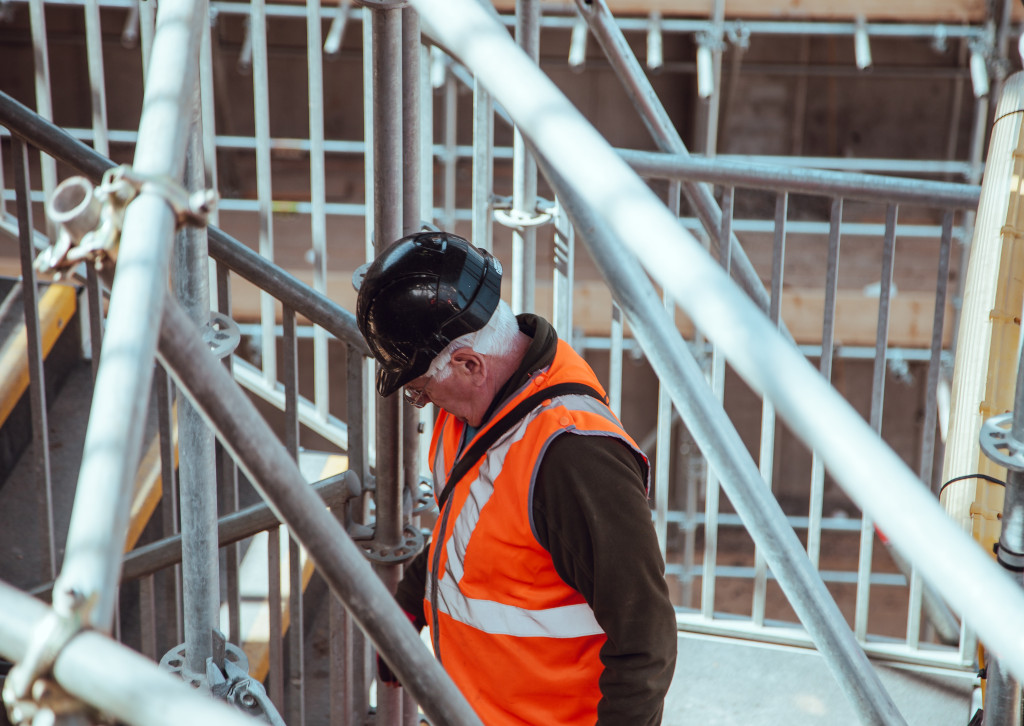
Five miles of concrete barriers that created one-lane chutes on the I-85 widening project in Cherokee County, South Carolina, have been removed after being blamed for a deadly crash in the work zone. The remaining five miles of chutes are expected to be removed by the end of the year.
The local coroner called the 10-mile section of one-lane chutes a “death trap” after three people were killed July 15 in an eight-vehicle crash. A tractor trailer had rear-ended the vehicles in one of the two southbound chutes near Gaffney. The semi was traveling in the passenger-car only chute instead of the one designated for truck traffic.
After the crash, the S.C. Department of Transportation met with the contractor to remove the chutes between mile markers 81 and 91. The speed limit was dropped from 55 to 45 mph in the area and down to 35 mph in the chutes.
The State Transport Police and S.C. Highway Patrol stepped up traffic enforcement in the area. The DOT discussed options with national work zone experts, which recommended improved signs for truck restrictions in the work zone.
“This project has been plagued by crashes throughout the work zone, including crashes like this one that involved tractor trailers that were traveling in lanes designated for passenger vehicles only,” SCDOT said after the incident.
The first section of chutes, between markers 81 and 86, were removed by September 15. The contractor is tasked with removing the chutes from markers 86 and 91 next. The SCDOT says 90 days of prep work is needed before the second five-mile section of chutes can be eliminated. It expects the removal to be finished before the end of the year.
The entire $830 million project involves widening and rehabilitating 29 miles of I-85 through Cherokee and Spartanburg counties between mile marker 77 and the N.C. state line. SCDOT commended the contractor, a joint venture of Blythe Construction and Zachry Construction, on removing the first chutes ahead of expectations.
Did you miss our previous article…
https://www.tortowheaton.com/?p=338